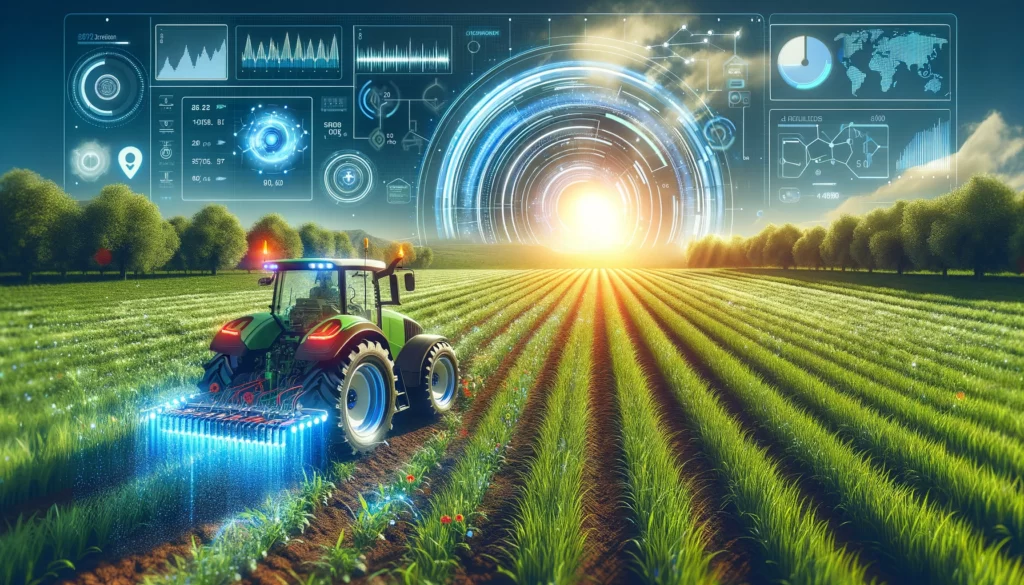Nutrient management is a cornerstone of successful agriculture, ensuring crops receive the precise balance of essential elements needed for growth, development, and yield. Traditional methods of assessing and managing soil nutrients have been largely reactive and often imprecise. However, the advent of Artificial Intelligence (AI) is transforming nutrient management into a precise, proactive science, marking a new era in agricultural efficiency and sustainability.
The Foundation of AI-Driven Nutrient Management
At its core, AI-driven nutrient management leverages advanced sensors, data analytics, and machine learning algorithms to assess soil conditions in real-time, providing detailed insights into nutrient levels, moisture content, pH balance, and more. This technology goes beyond mere measurement, using predictive analytics to forecast future nutrient deficiencies and surpluses, allowing for timely adjustments before they impact crop health.
How It Works: The AI Nutrient Management Process
- Data Collection: AI systems begin with the collection of comprehensive data from a variety of sources, including soil sensors, drones equipped with multispectral cameras, and satellite imagery. This data encompasses a wide range of parameters relevant to soil health and nutrient levels.
- Analysis and Prediction: Machine learning algorithms analyze this vast dataset to identify patterns, trends, and correlations. By understanding the relationship between various factors and crop outcomes, AI can predict how changes in soil composition will affect crop growth.
- Prescriptive Actions: Armed with predictive insights, AI-driven systems can recommend specific actions to optimize soil nutrient levels. This might include tailored fertilization schedules, the application of specific nutrient mixtures, or adjustments in irrigation practices.
- Continuous Learning: Perhaps most importantly, AI systems are designed to learn over time. With each crop cycle, the system refines its models and recommendations, becoming more accurate and effective at predicting and managing nutrient needs.
The Benefits of AI in Nutrient Management
The implementation of AI in nutrient management offers a multitude of benefits, reshaping agricultural practices for the better:
- Increased Crop Yields: By ensuring crops have the optimal nutrient mix at all times, AI-driven management can significantly increase yields.
- Resource Efficiency: Precise nutrient management reduces the waste of resources like fertilizers, lowering costs, and minimizing environmental impact.
- Environmental Protection: By avoiding over-fertilization, AI helps prevent runoff and leaching, protecting waterways from pollution and contributing to ecosystem health.
- Adaptability and Resilience: AI systems can quickly adjust recommendations based on changing conditions, such as weather events or unexpected soil depletion, enhancing farm resilience.
- Accessibility and Scalability: Cloud-based AI solutions can bring advanced nutrient management capabilities to farms of all sizes, democratizing access to cutting-edge technology.
Overcoming Challenges
While AI-driven nutrient management heralds a new dawn for agriculture, its implementation is not without challenges. The initial cost and complexity of setting up AI and sensor technologies can be prohibitive for some farmers, particularly those in developing regions. Additionally, the success of AI systems hinges on the availability and quality of data, requiring robust infrastructure and technical know-how.
The Road Ahead
The future of AI-driven nutrient management is bright, with ongoing advancements in AI, machine learning, and sensor technology poised to further enhance its accuracy, accessibility, and impact. Collaborations between tech companies, research institutions, and agricultural stakeholders are key to overcoming existing barriers and unlocking the full potential of this revolutionary approach.
In conclusion, AI-driven nutrient management represents a significant leap forward in our quest for sustainable, efficient, and productive agriculture. By harnessing the power of AI, we can ensure that our soils are healthier, our crops more bountiful, and our agricultural practices more sustainable for generations to come.



